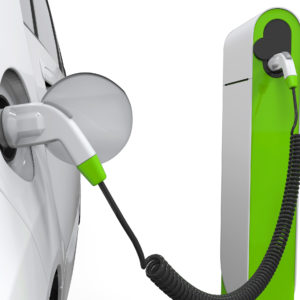A couple of years ago in California, I chose the hydrogen fuel cell vehicle (HFCV) as an example of irrational exuberance about a new technology, pointing to the recent enthusiasm for a startup company that, with little information about its product available, had become a darling of some in the investment community. I reminded the audience of the case of Ballard Power, which twenty years earlier had announced a new, better fuel cell technology, resulting in a soaring stock price and hundreds of millions of dollars of investment money from the major automobile companies, some of whom confidently predicted sales in the tens of thousands of HFCVs per year by 2005.
Geoffrey Ballard, the founder of the company, was widely heralded for his efforts to replace the internal combustion engine: “In 1999 he was named by Time as ‘Hero of the Planet’. In 2002 he was named ‘Business Leader of the Year’ from Scientific American. He received the World Technology Network Award in Energy in 1999, and in Environment in 2000. He also received the Gutenberg International Environment prize in Sweden in 2000. He served as chair of the Canadian Hydrogen Association and as an Advisory Board member for the Institute of Transportation Studies, University of California.”
In the end, however, the company produced little more than a handful of electric buses and power systems for space and subsea applications. Certainly, he is to be lauded for his efforts, and his heart was arguably in the right place, but as heroes go, he was more Inspector Clouseau than Hercules.
At the California meeting, I opined that the sin was not investors pumping money into the company, or the lavish praise heaped on the founder. Rather, the inability of auto manufacturers to recognize that the technology was far from commercial is appalling. It was then pointed out to me that, one, the California government had lost money on Ballard Power buses and two, they had instituted a new mandate, requiring automakers to sell 15% zero emission vehicles (ZEV) (battery or hydrogen fuel cell) and plug-in hybrid electric vehicles (PHEV) by 2025, and promoting the construction of hydrogen fueling stations.
Where California falls down is in thinking it is possible to mandate a scientific breakthrough. In the past, success has come from mandating progress, essentially engineering cars to make them cleaner. But the current mandates are requiring an entirely new battery (lithium ions will never be cheap and powerful enough to satisfy most consumers) or progress across the board in hydrogen technology.
For HFCVs to become viable, there needs to be progress in making hydrogen much cheaper, transport and storage of hydrogen much cheaper, and fuel cells very much cheaper. None of these is close and the mandate won’t make an appreciable difference. Fuel cells have been researched for decades and there is no hidden secret to be prised out of the research laboratories by government fiat. The economic potential of fuel cells is so great as to encourage many of our brilliant minds to wrestle with the problem.
Cleantech more generally suffers from enthusiasm from environmentalists and politicians who are apparently incapable of understanding the scientific and technical issues involved. But the economics are much clearer and they are usually unattractive, which is why subsidies and mandates dominate the field. But there is a serious risk of consumer and taxpayer blowback that could lead to a serious downturn for companies in the field. Perhaps a little more attention to the history of unsupported exuberance would serve them better

